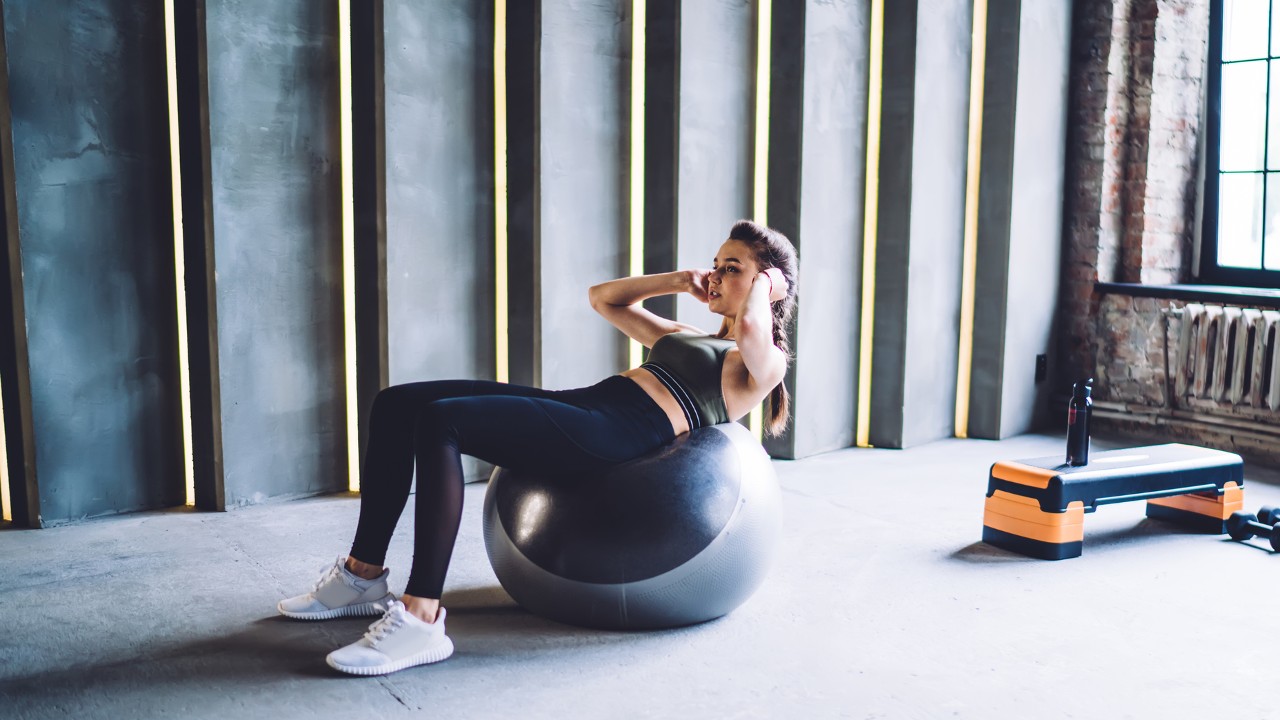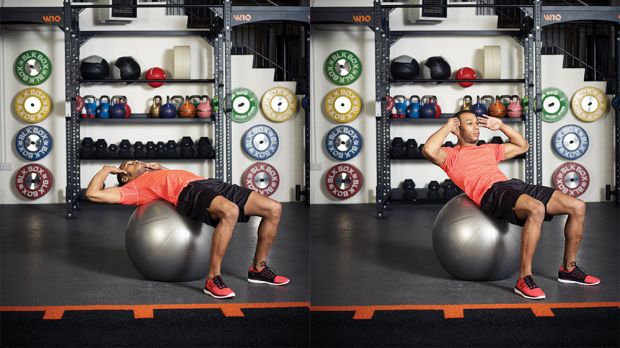How To Do The Swiss Ball Crunch
Introduce some instability to increase the challenge of your crunches

Crunches are many people’s go-to abs exercise, and that’s no bad thing. While there is debate about whether crunches are effective for building a six-pack, they undoubtedly work a large section of your core muscles hard.
You can easily complement crunches with other abs exercises like the reverse crunch and bicycle crunches to hit the muscles missed by the classic crunch. Using a variety of exercises like this will whip your midsection into shape in no time, especially if you upgrade your crunch by introducing a Swiss ball (aka gym ball, balance ball and various other names).
The Swiss ball crunch is a great progression on the classic crunch that anyone with access to a big inflatable ball can try.
Benefits Of The Swiss Ball Crunch
Perform any exercise with a part of your body resting on a Swiss ball and you introduce some instability into the movement – and when doing core exercises, instability is your friend. All your smaller stabilising muscles will be firing to keep you balanced while you perform the exercise, multiplying the benefits to your overall core strength.
The Swiss ball crunch also allows for a greater range of movement than the classic crunch, because you can curve your back over the ball so you start lower than when you’re on the floor. You’ll exhaust your abs more quickly using a ball for the crunch, and will see your core strength and muscle definition increase rapidly as a result.
How To Do The Swiss Ball Crunch

Position yourself on a Swiss ball so it supports your lower back, with your knees bent and feet planted firmly on the floor. You can cross your arms over your chest, or hold your hands by your temples if you need a little extra help with your balance during the move.
Start the exercise by lying back over the ball until you feel a stretch in your abs. Then curl yourself up by contracting your abs. Try not to lurch forwards and use momentum in the movement – it should be slow and controlled for the maximum abs engagement.
Get the Coach Newsletter
Sign up for workout ideas, training advice, reviews of the latest gear and more.
At the top of the move, squeeze your abs for a second, then lower slowly, once again using your abs to control the movement rather than just flopping back onto the ball.

Nick Harris-Fry is a journalist who has been covering health and fitness since 2015. Nick is an avid runner, covering 70-110km a week, which gives him ample opportunity to test a wide range of running shoes and running gear. He is also the chief tester for fitness trackers and running watches, treadmills and exercise bikes, and workout headphones.









